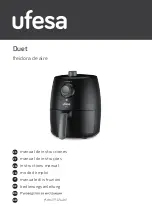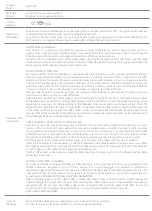
70
4.1 F
UNCTION
MENU
4.1 F
UNCTION
MENU
ALS
20X
256
Apply comp. time
function:
– Time which the applicator needs from start impulse
to touch down (= stroke time).
– Setting range: [0…99999] ms.
Most applicators have a constant stroke time. If
the labeller is driven with variable speed, this
leads to different label positions on the product.
With a slow conveyor speed, the touch down
comes too early, with a high conveyor speed, it is too
late. With the stroke time entered in the function
Apply
comp. time
, the dispenser corrects this effect, and there-
fore improves the labelling precision.
Setting instruction:
Setup the labeller with a slow conveyor speed.
Turn the conveyor speed high.
Adjust the labelling position by increasing the
Apply
comp. time
step by step, until the labelling position is
correct.
Submenu >AI BOARD SIGNAL
This menu only appears, if an optional applicator inter-
face (AI) is installed
and
if
SIGNAL INTERFACE > Interface
mode
= „Applic. signals“. The functions in the menu refer
to the AI.
Applicator type
function:
– See description of function
SIGNAL INTERFACE >AP-
PLIC. SIGNALS > Applicator type
on Seite 58.
Apply mode
function:
– Determines whether the application process begins
with application (“after start sig.”) or dispensing (“af-
ter dispensing”) of a label.
– Settings: [“After dispensing”, “
After start sig
”]
“After dispensing”: The start signal triggers both the
dispensing and the application of a label.
“After start sig.”: The start signal triggers the
application of a label that has already been
dispensed. The next label is then dispensed
immediately after application.
Start mode
function:
– Selects a start mode. Depending on the selected
mode, the start signal will be interpreted differently.
– Settings: [„Pulse fall/ris“, „Level high activ“, „Pulse
rising“, „Level low active“,
„Pulse falling“
]
„Pulse fall/ris“: The dispensing of a label is triggered
by a low-high-change as well as by a high-low-
change of the start signal. The dispensing occurs
only after the set delay time.
„Level high activ“: Labels are being dispensed as
long as the start signal is held high.
„Pulse rising“:
The dispensing of a label is triggered
by a low-high-change of the start signal. The
dispensing occurs only after the set delay time.
„Level low active“:
Labels are being dispensed as
long as the start signal is held low.
„Pulse falling“: The dispensing of a label is triggered
by a high-low-change of the start signal. The
dispensing occurs only after the set delay time.
Dwell time
function
– Only appears, if
SIGNAL INTERFACE >AI BOARD
SIGNAL > Applicator type
= PEP, „PEP Blow On“, „Re-
verse PEP“, BTS or „LA-TO Timed“
– Determines the length of time for which the applica-
tor is extended
– Is required for applicators that are not limited by a
touch-down signal
– Dedicated signal output: pin 1 (cylinder) at the appli-
cator connector
– Adjustment range: [1…99999] ms; default: 200 ms
(LA-TO Timed: 500 ms)
Blow on time
function:
– Only appears, if
SIGNAL INTERFACE >AI BOARD
SIGNAL > Applicator type
= „PEP Blow on“, ASA,
„Reverse PEP“, BTS, „O-ring applicat.“ or LA-BO
– Sets the duration for blowing on of each label
– Only appears when an applicator that requires blow-
ing on is used (e.g. “PEP Blow on”)
– Dedicated signal output: pin 7 (cylinder) at the appli-
cator connector
– Adjustment range: [0…99999] ms; default: 50 ms
(LA-BO: 60 ms)
Restart delay
function:
– Determines the length of time after application for
which no start signals will be accepted.
– Adjustment range: [0…99999] ms; default: 0 ms
Содержание ALS 204
Страница 1: ...ALS 204 206 256 SERVICE INSTALLATION MANUAL Labeller Edition 8 3 2012 Original version ...
Страница 2: ......
Страница 125: ...125 7 ELECTRONICS DESCRIPTION 7 3 CIRCUIT BOARDS ALS 20X 256 Layout diagram 125 Layout diagram for the CPU board ...
Страница 128: ...128 7 ELECTRONICS DESCRIPTION 7 3 CIRCUIT BOARDS ALS 20X 256 Layout diagram 129 Layout diagram for motor driver board ...
Страница 223: ......
















































